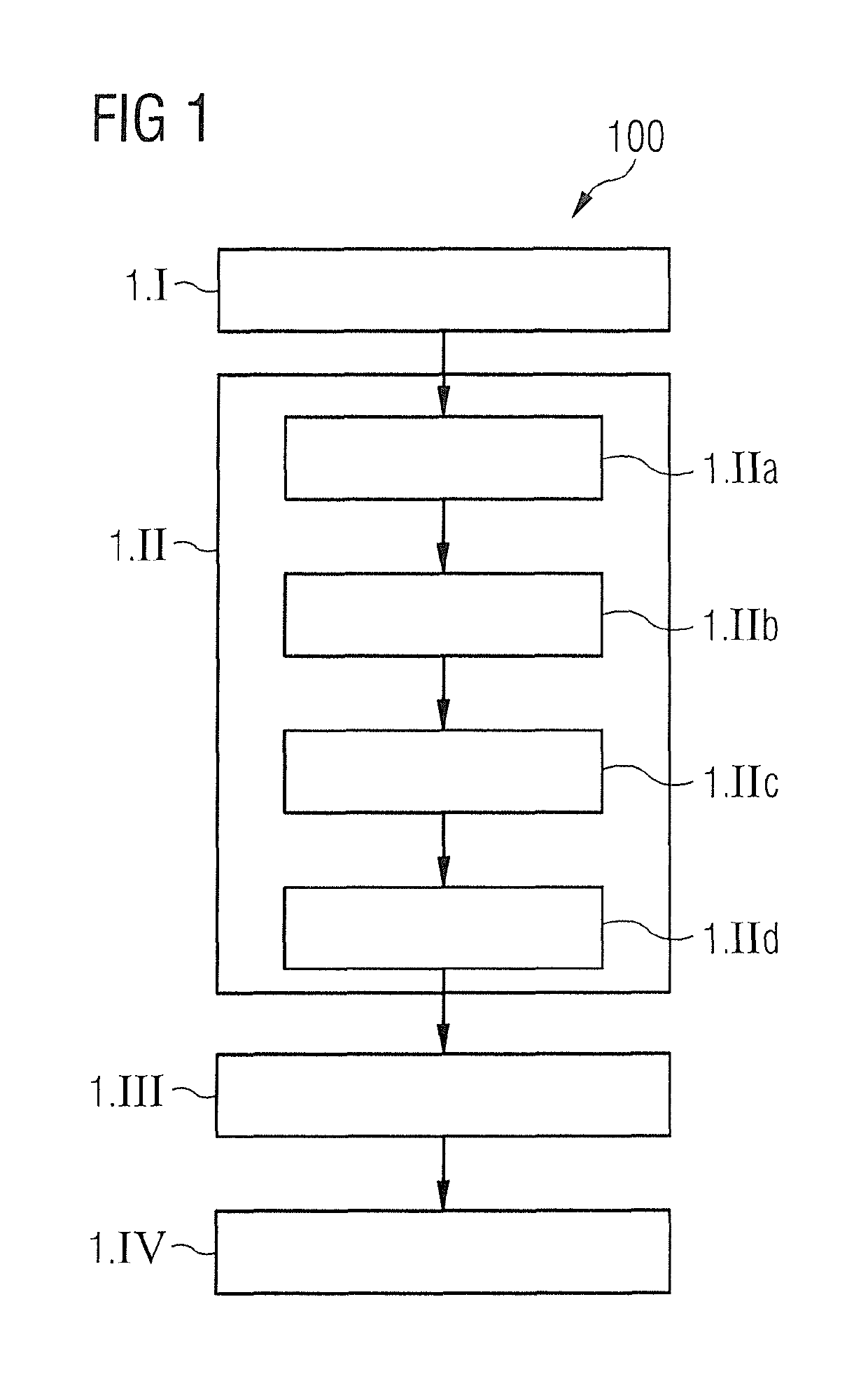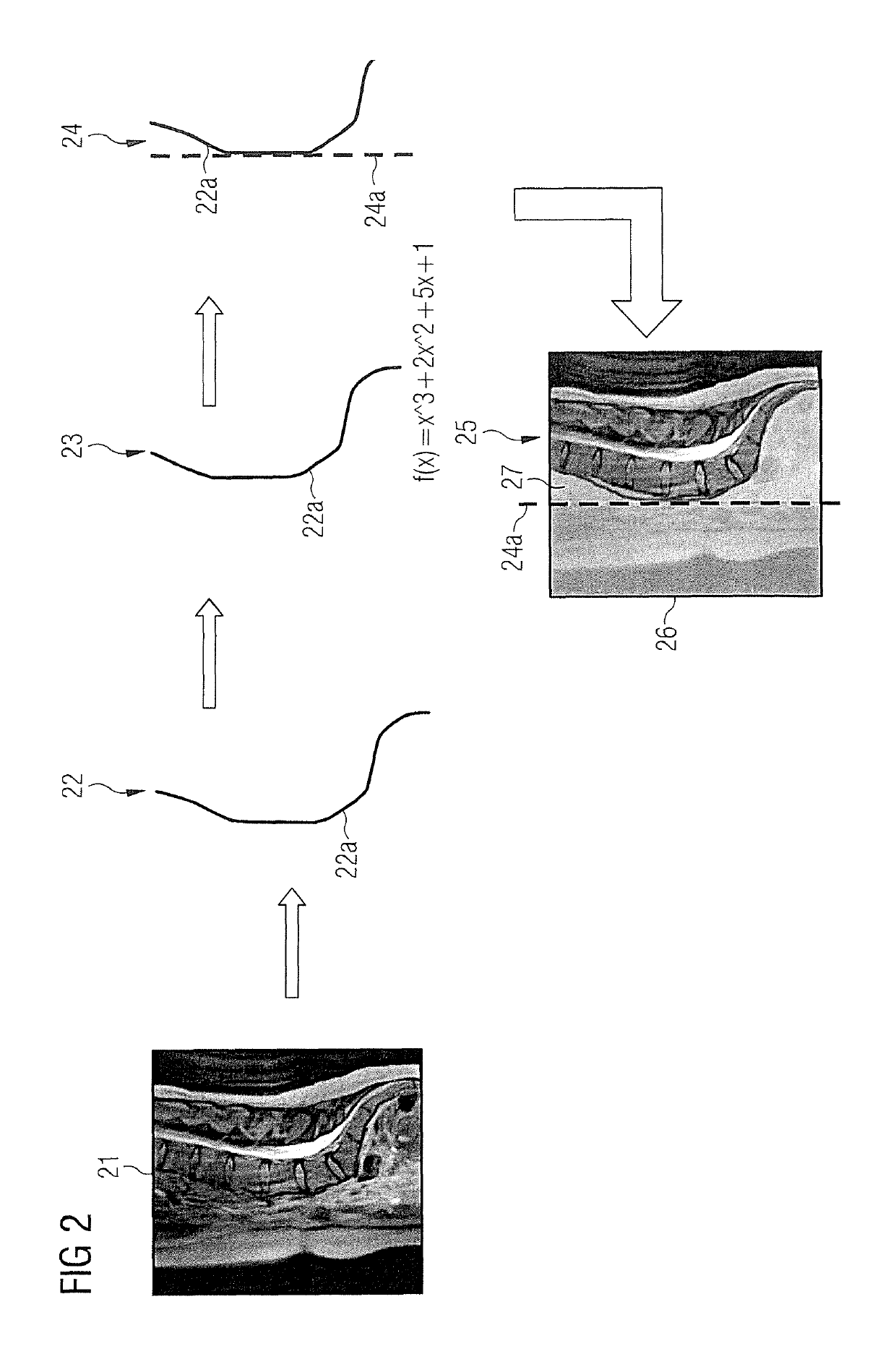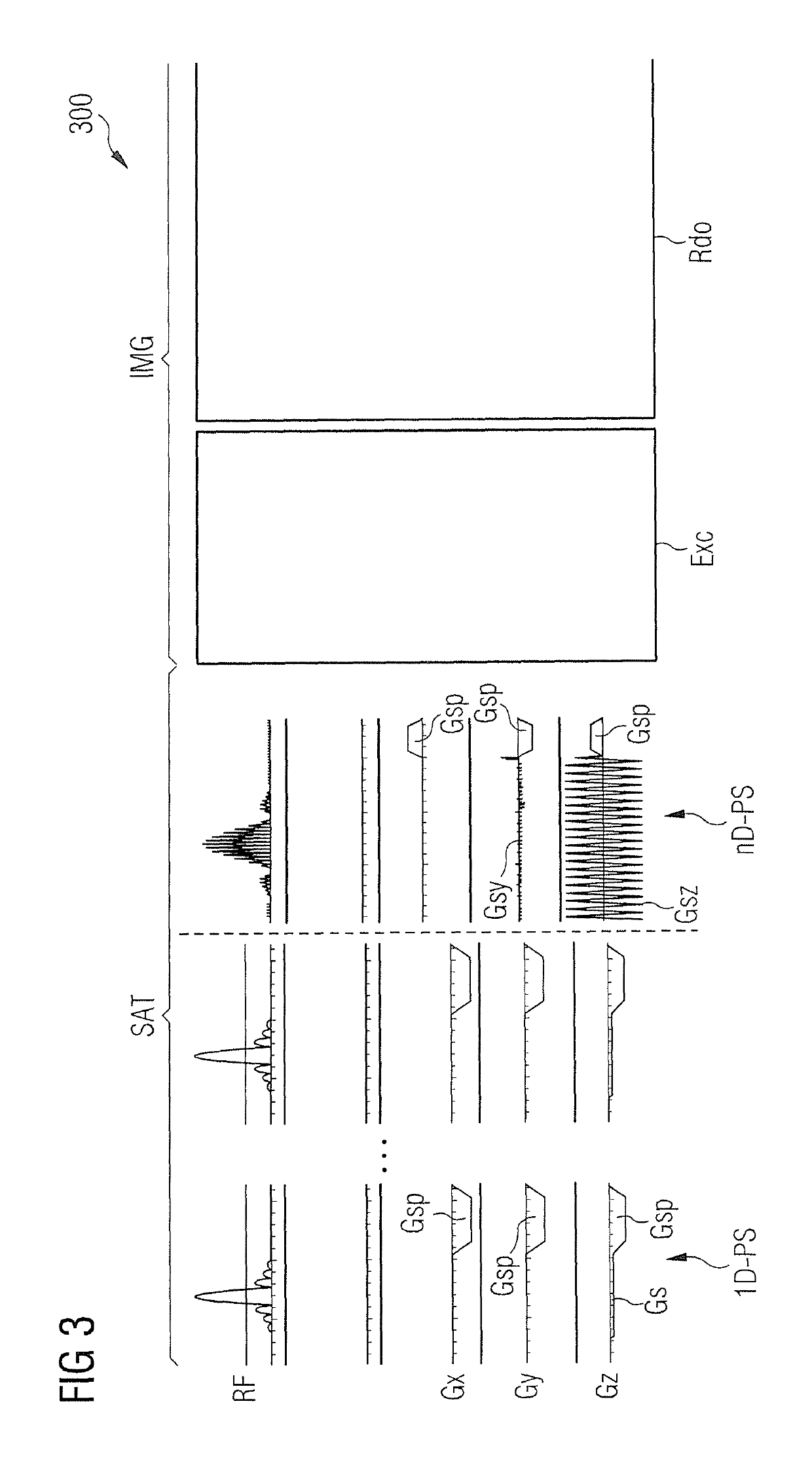Magnetic resonance data acquisition method and apparatus saturation with spin dependent on the anatomical structures to be imaged
- Summary
- Abstract
- Description
- Claims
- Application Information
AI Technical Summary
Benefits of technology
Problems solved by technology
Method used
Image
Examples
Embodiment Construction
[0049]FIGS. 1 and 2 illustrate a method 100 for determining a control sequence for controlling a magnetic resonance imaging system by means of a saturation pulse sequence according to a first exemplary embodiment of the invention. Whereas in FIG. 1 the method execution sequence is illustrated with the use of a flowchart, in FIG. 2 the individual steps are illustrated by graphic illustrations, in this case the side view of a torso region of a human being. In the flowchart shown in FIG. 1, information in respect of the anatomical structure of a region to be imaged FoV of the examination subject is determined in step 1.I. Corresponding thereto, an image called a localizer is shown in FIG. 2. This serves for generating an overview image 21, from which the anatomical structure of a region to be imaged, in this case a side view of the human torso with spinal column, abdominal region and lower abdomen, can be extracted.
[0050]At step 1.II shown in FIG. 1, the region to be imaged FoV is subd...
PUM
 Login to View More
Login to View More Abstract
Description
Claims
Application Information
 Login to View More
Login to View More - R&D
- Intellectual Property
- Life Sciences
- Materials
- Tech Scout
- Unparalleled Data Quality
- Higher Quality Content
- 60% Fewer Hallucinations
Browse by: Latest US Patents, China's latest patents, Technical Efficacy Thesaurus, Application Domain, Technology Topic, Popular Technical Reports.
© 2025 PatSnap. All rights reserved.Legal|Privacy policy|Modern Slavery Act Transparency Statement|Sitemap|About US| Contact US: help@patsnap.com



